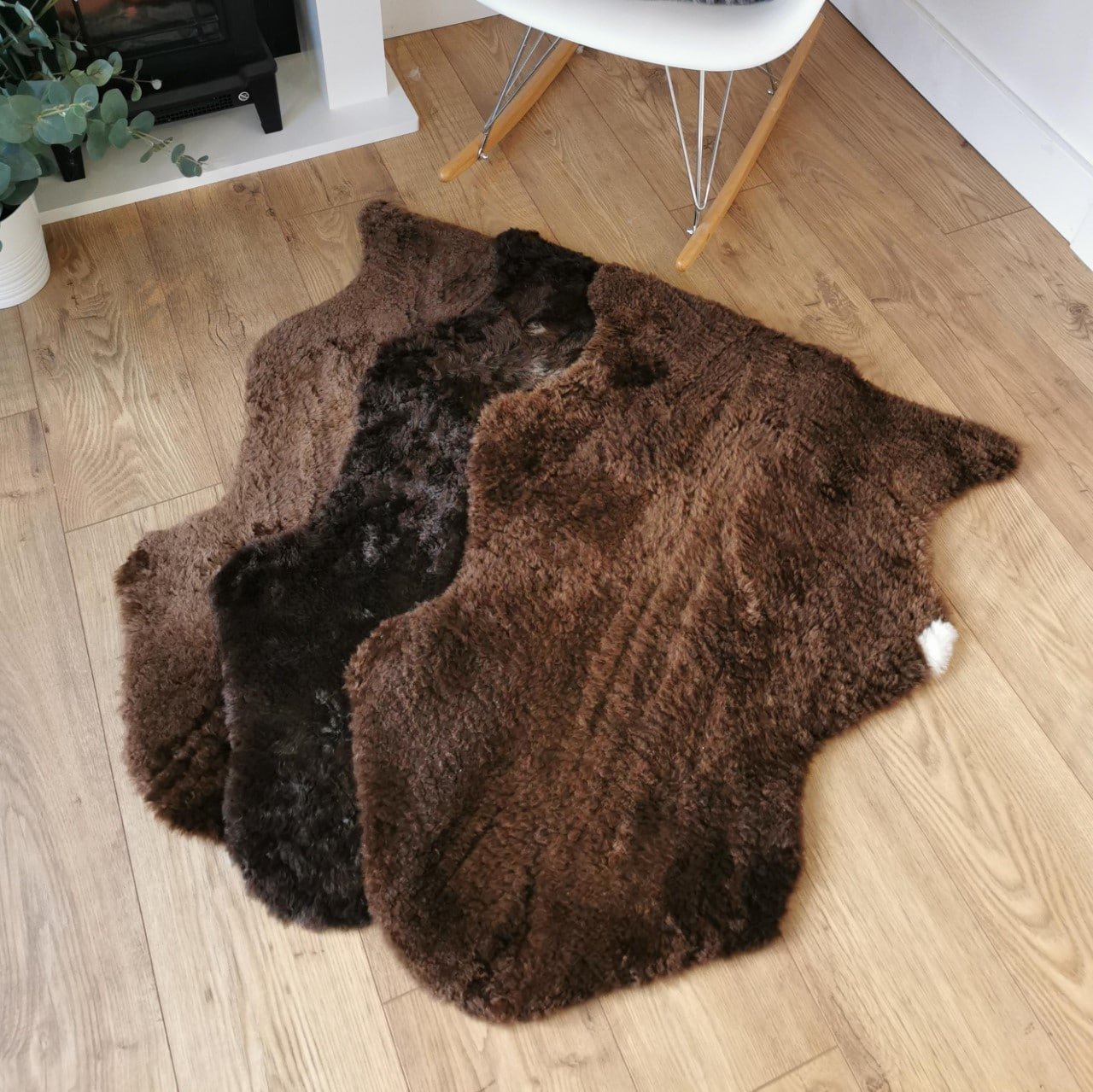Shearling and sheepskin are two popular materials used in the fashion industry for their warmth, comfort, and durability. However, many people confuse the two or are unsure of their differences. In this article, we will explore what shearling and sheepskin are, their unique properties, and their benefits.
What is Shearling?
Shearling is a material made from sheepskin that has been tanned with the wool still attached. This creates a material that is soft and fluffy on one side, and suede-like on the other. Shearling is often used in the fashion industry for coats, jackets, and boots, as it provides warmth and comfort.
Shearling has a number of unique properties that make it an attractive material for fashion designers. For one, it is naturally insulating, which means it can keep you warm in cold weather. Additionally, the wool fibers in shearling are hollow, which allows them to trap air and create an extra layer of insulation. This makes shearling an excellent choice for outdoor clothing, as it can keep you warm even in extreme conditions.
Another benefit of shearling is its durability. The wool fibers are naturally strong and resistant to wear and tear, which means that shearling clothing can last for years if properly cared for. This makes shearling a smart investment for anyone looking for high-quality, long-lasting clothing.
What is Sheepskin?
Sheepskin is a material made from the skin of a sheep. Unlike shearling, sheepskin has been tanned with the wool removed. This creates a material that is smooth on one side and suede-like on the other. Sheepskin is often used in the fashion industry for coats, jackets, and boots, as well as for home decor items such as rugs and pillows.
Like shearling, sheepskin has a number of unique properties that make it an attractive material for fashion designers. For one, it is naturally insulating, which means it can keep you warm in cold weather. Additionally, sheepskin is naturally hypoallergenic, which means it is less likely to cause skin irritation or allergic reactions.
Another benefit of sheepskin is its versatility. It can be dyed a variety of colors and used in a number of different applications, from clothing to home decor. This makes sheepskin a popular choice for designers looking to create unique and eye-catching pieces.
Differences between Shearling and Sheepskin
While shearling and sheepskin are similar in many ways, there are some key differences between the two materials. The main difference is that shearling is tanned with the wool still attached, while sheepskin is tanned with the wool removed.
This difference has a number of implications for the properties of the materials. For one, shearling tends to be thicker and fluffier than sheepskin, which makes it more insulating and comfortable. Additionally, shearling tends to be more durable than sheepskin, as the wool fibers provide extra strength and resistance to wear and tear.
On the other hand, sheepskin tends to be smoother and more lightweight than shearling, which makes it a good choice for clothing and accessories that need to be more streamlined. Additionally, sheepskin is easier to clean and maintain than shearling, as it does not have wool fibers that can trap dirt and debris.
Benefits of Shearling and Sheepskin
Both shearling and sheepskin have a number of benefits that make them attractive materials for fashion designers and consumers alike. Some of the key benefits of these materials include:
- Warmth: Both shearling and sheepskin are naturally insulating, which means they can keep you warm in cold weather.
- Comfort: The soft and fluffy texture of shearling makes it a particularly comfortable material to wear, while sheepskin is smooth and lightweight.
- Durability: Both materials are naturally
Both materials are naturally strong and durable, which means that they can last for years if properly cared for. They are also resistant to wear and tear, which makes them a smart investment for anyone looking for high-quality clothing or accessories.
- Hypoallergenic: Sheepskin is naturally hypoallergenic, which means it is less likely to cause skin irritation or allergic reactions.
- Versatility: Shearling and sheepskin can be used in a variety of different applications, from clothing and accessories to home decor items like rugs and pillows. They can also be dyed a variety of colors to suit different styles and preferences.
- Sustainability: Shearling and sheepskin are both natural and renewable materials, which makes them a more sustainable choice than synthetic alternatives. Additionally, they are often sourced from by-products of the meat industry, which helps to reduce waste.
How to Care for Shearling and Sheepskin
To ensure that your shearling or sheepskin clothing or accessories last as long as possible, it is important to take good care of them. Here are some tips for caring for these materials:
- Avoid getting the material wet, as water can damage the wool fibers and cause them to shrink or become misshapen.
- If your shearling or sheepskin item does get wet, let it dry naturally and away from heat sources like radiators or direct sunlight.
- Brush the wool fibers regularly with a soft-bristled brush to keep them looking fluffy and prevent matting.
- Use a mild soap and water solution to spot clean any stains, and avoid using harsh chemicals or detergents.
- Store your shearling or sheepskin item in a cool, dry place away from direct sunlight and moisture. Avoid storing it in a plastic bag, as this can cause the material to dry out and become brittle.
Conclusion
In conclusion, shearling and sheepskin are two popular materials used in the fashion industry for their warmth, comfort, and durability. While they are similar in many ways, there are some key differences between the two materials that make them better suited for different applications.
Whether you choose shearling or sheepskin, it is important to take good care of your items to ensure they last as long as possible. With proper care, these materials can provide warmth, comfort, and style for years to come.
Both shearling and sheepskin offer unparalleled comfort and style that can last for years if properly cared for. These materials are known for their softness, warmth, and luxurious texture, making them a popular choice for fashion enthusiasts and outdoor enthusiasts alike.
One of the most significant benefits of both materials is their insulating properties. The natural wool fibers trap heat close to the body, providing warmth and comfort in cold weather. This makes them an ideal choice for winter clothing and accessories like jackets, boots, and hats.
Practical Benefits
In addition to their practical benefits, shearling and sheepskin are also highly versatile materials. They can be found in a wide range of clothing and accessory styles, from classic bomber jackets and aviator hats to modern ankle boots and handbags. They can be dressed up or down to suit different occasions, and their neutral color palette makes them easy to pair with a variety of different outfits.
Another benefit of shearling and sheepskin is their durability. These materials are naturally strong and resistant to wear and tear, making them a smart investment for anyone looking for long-lasting clothing or accessories. They are also naturally water-resistant, which means that they can repel moisture and stay looking good even in wet weather.
When it comes to differences between shearling and sheepskin, the primary distinction is in the tanning process. Shearling is made by tanning a sheepskin with the wool still attached, while sheepskin is tanned with the wool removed. This gives shearling a thicker, more plush texture and makes it better suited for colder weather, while sheepskin is lighter and more breathable, making it ideal for transitional seasons.
In terms of benefits, both materials offer a range of advantages. Here are a few key benefits of each:
Benefits of Shearling:
- Soft and plush texture
- Ideal for colder weather
- Highly insulating and warm
- Naturally water-resistant
- Durable and long-lasting
Benefits of Sheepskin:
- Lighter and more breathable
- Suitable for transitional seasons
- Naturally hypoallergenic
- Versatile and easy to style
- Sustainable and eco-friendly
Overall, both shearling and sheepskin offer a range of benefits that make them a popular choice for fashion-conscious consumers. Whether you prefer the thick, plush texture of shearling or the lighter, more breathable feel of sheepskin, these materials are sure to provide warmth, comfort, and style for years to come.










